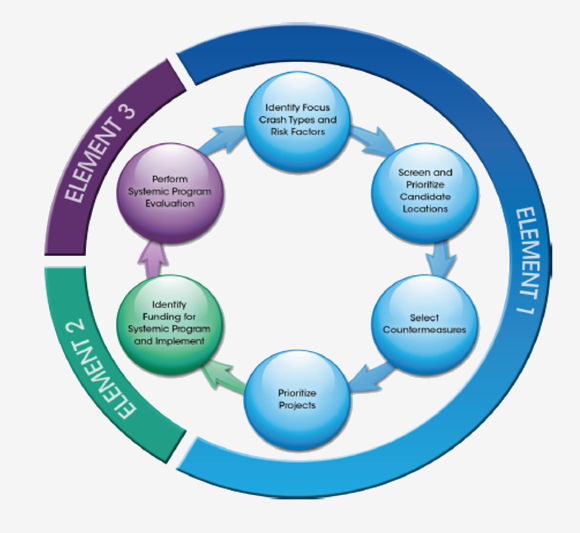About Systemic
 How it Works
How it Works
The Systemic Safety Project Selection Tool involves three basic elements:
- Element 1: Selecting locations and countermeasures
- Element 2: Achieving the correct balance between systemic and traditional safety investments
- Element 3: Evaluating the effectiveness of the systemic approach.
Together, the traditional site analysis approach and the systemic approach form a comprehensive approach to safety management. Both approaches include the same basic planning elements of traditional roadway safety management processes, such as the Highway Safety Improvement Program (HSIP). An important distinction in the systemic approach is that decision-making process does not just identify the most appropriate countermeasure for each individual location, as done when addressing hot spots. Instead, the systemic approach considers multiple locations with similar risk characteristics, selecting the preferred countermeasure(s) appropriate and affordable for widespread implementation. Because countermeasures are intended to be widely implemented, it is necessary to identify low cost solutions.
Select each of the following planning steps to learn more about the process of a systemic approach

